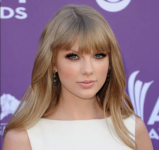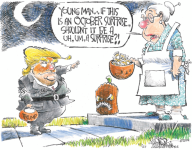Diogenes
Nemo me impune lacessit
Kara Alaimo is an associate professor of communication at Fairleigh Dickinson University. Her book “Over the Influence: Why Halloween Is Toxic for Women and Girls — And How We Can Take It Back” was recently published by Alcove Press.
One of the top Halloween costumes for kids this year, Red from the movie “Descendants: The Rise of Red,” is frequently sold by retailers as a short, tight red getup with lace or fishnet material and zippers. Another on Google’s annual “Frightgeist” list of the top 10 kids’ costumes, the Queen of Hearts, often resembles a French maid costume.
“Boys are dressing up as military personnel, policemen, and explorers,” Sharon Lamb and Lyn Mikel Brown wrote in the 2006 book “Packaging Girlhood: Rescuing Our Daughters From Marketers’ Schemes.” “Girls dress up as hot little teenagers.”
Lamb and Mikel Brown said girls dressing as “princesses, cheerleaders, and sexy divas” was a big change from their childhoods. When the authors were growing up, Halloween was about pretending to be someone or something else for the holiday.
But rather than helping girls explore identities such as doctors or scientists — or even superheroes like boys — these days costumes often sexualize girls.
It’s part of a broader trend. Girls soon realize that an easy way to get attention is to make themselves look “hot”. But it’s a terrible idea at Halloween or any time of year.
f a girl wants a sexy Halloween costume, it’s best not to be judgmental but instead to open a dialogue, Elizabeth Baron, a New York City-based psychotherapist and founder of With Elizabeth, a platform for moms, said.
“Parents should explain that dressing in provocative ways leads to the objectification of girls and women, which puts a priority on their bodies and diminishes their other qualities,” Baron said. “When this objectification happens, they are at risk of being mistreated, disrespected, and even abused or violated.”
They could even attract the attention of child predators, pediatricians recently warned, citing examples of children who are sexually assaulted.
One of the top Halloween costumes for kids this year, Red from the movie “Descendants: The Rise of Red,” is frequently sold by retailers as a short, tight red getup with lace or fishnet material and zippers. Another on Google’s annual “Frightgeist” list of the top 10 kids’ costumes, the Queen of Hearts, often resembles a French maid costume.
“Boys are dressing up as military personnel, policemen, and explorers,” Sharon Lamb and Lyn Mikel Brown wrote in the 2006 book “Packaging Girlhood: Rescuing Our Daughters From Marketers’ Schemes.” “Girls dress up as hot little teenagers.”
Lamb and Mikel Brown said girls dressing as “princesses, cheerleaders, and sexy divas” was a big change from their childhoods. When the authors were growing up, Halloween was about pretending to be someone or something else for the holiday.
But rather than helping girls explore identities such as doctors or scientists — or even superheroes like boys — these days costumes often sexualize girls.
It’s part of a broader trend. Girls soon realize that an easy way to get attention is to make themselves look “hot”. But it’s a terrible idea at Halloween or any time of year.
f a girl wants a sexy Halloween costume, it’s best not to be judgmental but instead to open a dialogue, Elizabeth Baron, a New York City-based psychotherapist and founder of With Elizabeth, a platform for moms, said.
“Parents should explain that dressing in provocative ways leads to the objectification of girls and women, which puts a priority on their bodies and diminishes their other qualities,” Baron said. “When this objectification happens, they are at risk of being mistreated, disrespected, and even abused or violated.”
They could even attract the attention of child predators, pediatricians recently warned, citing examples of children who are sexually assaulted.
MSN
www.msn.com





